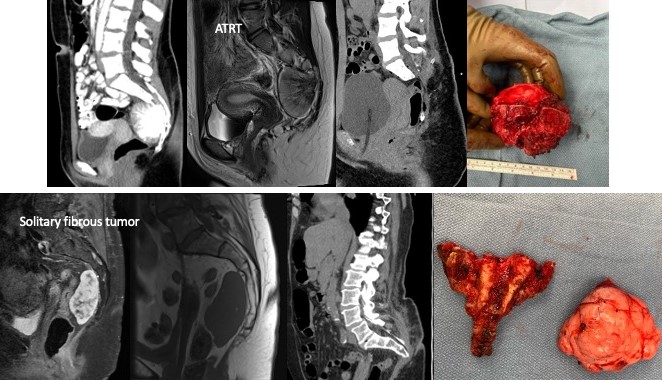
Tumors in the spinal cord, nerves, or spinal column cause progressive neurological problems and pain. At Penn Medicine we have some of the top experts in their field who can implement the latest medical and surgical approaches to treat all types of spinal tumors. Within the Penn Spine Center, they collaborate with over 20 other physicians to create personalized treatment plans and make recommendations about how to best maximize patient outcomes. This would include working with specialists such as Oncology, Radiation Oncology, Plastic Surgery, Orthopedic Oncology, and Physical Medicine and Rehabilitation
Our Spinal Tumor Program treats primary and metastatic spinal column and spinal cord tumors using advanced imaging and surgical technology. Together with our neuro-oncology team, we create a comprehensive treatment plan that also includes radiation and chemotherapy for malignant spinal tumors.
The spinal cord and spinal column tumors we treat at the Penn Spine Center include:
- Astrocytomas
- Ependymomas
- Hemangioblastomas
- Chordoma
- Chondrosarcoma
- Epidural Hemangiomas
- Ewings Sarcoma
- Giant Cell Tumor
- Lipoma
- Nerve Sheath Tumor
- Osteoid Osteoma
- Osteoblastoma
- Osteosarcoma
Within the Department of Neurosurgery, we are always pushing the boundaries on what's possible and the Spine Tumor Program is a perfect example of that. Take the video above for example, Neil Malhotra, MD with the assistance of Bert O'Malley Jr., MD treated a case of Chordoma utilizing a trans-oral robotic (TORS) approach for the surgery. TORS is the world's first group of minimally invasive robotic surgery techniques to remove benign and malignant tumors of the mouth and throat, and it was developed right here at Penn Medicine.
Before TORS, chordoma patients had to endure major invasive surgery. This includes splitting the jawbone, making major cuts in the chin, neck, throat, tongue and palate, and potentially destroying speech, the ability to swallow, and altering cosmetic appearance. By simply working through the mouth, TORS sidesteps all of these major issues while helping neurosurgeons visualize the approach and closure during their resection.
This new procedure would be called an En Bloc Spondylectomy and TransOral Robotic Surgery, and it consisted of three main stages:
- Stage 1 In the first stage, Dr. Malhotra and a team of neurosurgeons entered the back of the patient's neck and separated the tumor from the spinal bone. There were two critical goals during this stage: first, surgeons had to make ultrasonic bone cuts around the tumor without actually touching it. Second, they had to avoid injuring the spinal cord that lay between the surgeon and the tumor/spinal column.
- Stage 2 In the second stage, Dr. O'Malley and a team of head and neck surgeons used TORS to clear a path so the tumor could be completely visualized. This enabled Dr. Malhotra to remove the tumor, along with a small part of the spinal column, en bloc. A second TORS procedure was performed to close that pathway to the tumor.
- Stage 3 Finally, the team reconstructed the patient's spinal column. Since they had removed an important bone in his neck, they used some of the patient's own bone from his hip and rods to finalize stabilization of the newly built portion of his spine.